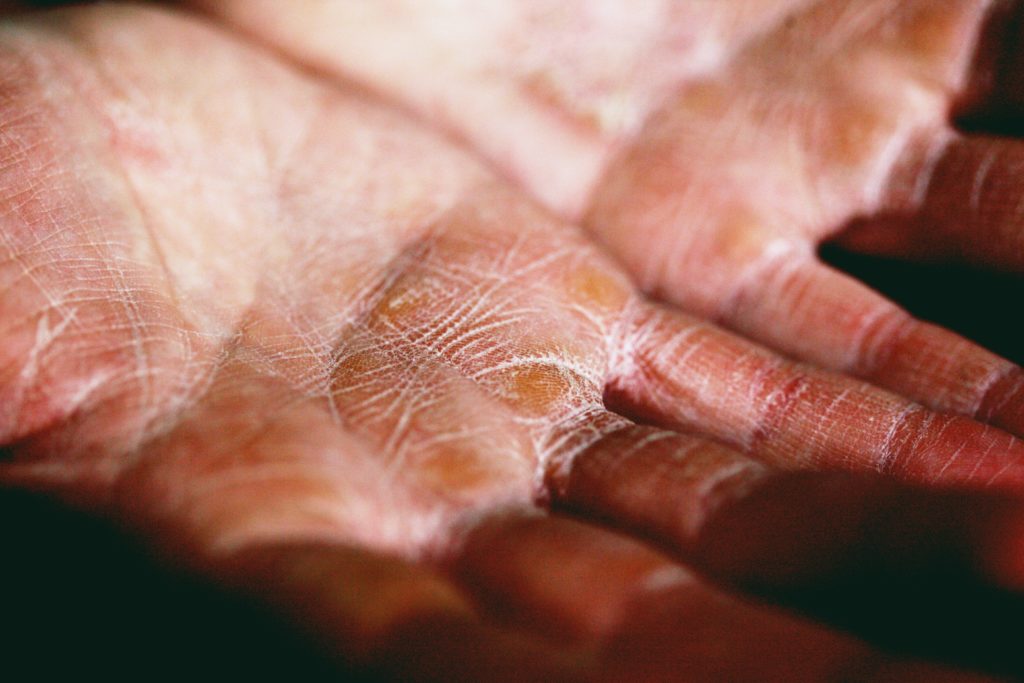Achieving healthy, radiant skin is a goal many strive for, but it can feel elusive at times. Skincare routines often focus on daily cleansing, moisturizing, and sun protection, but many overlook the transformative power of regular chemical peels. These treatments offer a deeper form of skin renewal, targeting issues like dullness, uneven texture, acne, and signs of aging.
Regular chemical peels are a game-changer for anyone looking to rejuvenate their skin and maintain a youthful glow. This article explores the importance of incorporating chemical peels into your skincare routine for long-term skin health and vitality.
How Chemical Peels Work
Chemical peels involve applying a chemical solution to the skin to remove dead cells from the surface, allowing for new, healthier skin to regenerate. The solution typically contains acids like glycolic, salicylic, or lactic acid, which exfoliate the outer layer of the skin. This process stimulates the body’s natural healing response, encouraging collagen production and cell turnover.
Depending on the type of peel, the treatment can penetrate different skin layers to address various concerns, from surface-level dullness to deeper scars and wrinkles.
Benefits of Regular Chemical Peels
The advantages of chemical peels extend far beyond just surface-level exfoliation. Here are some key benefits:
1. Exfoliates Dead Skin Cells
Our skin naturally sheds dead cells, but sometimes this process slows down, leading to a buildup that causes dullness and rough texture. Regular chemical peels help remove these dead cells more efficiently, revealing smoother, brighter skin underneath. This exfoliation process also helps other skincare products absorb more effectively, making your entire routine more beneficial.
2. Improves Skin Tone and Texture
Uneven skin tone, hyperpigmentation, and rough texture are common concerns that chemical peels can address. The treatment promotes an even skin tone by breaking down pigmentation clusters and encouraging new, healthy skin cells to take their place. Over time, chemical peels can significantly improve the skin’s smoothness, making it look more youthful and refreshed.
3. Reduces Fine Lines and Wrinkles
Aging skin naturally loses collagen and elasticity, leading to fine lines and wrinkles. Regular chemical peels help stimulate collagen production, which plays a crucial role in maintaining firm, smooth skin. While a single peel may show slight improvements, a series of treatments can result in noticeable reductions in the appearance of fine lines, helping your skin look younger and more rejuvenated.
4. Helps Clear Acne and Prevent Breakouts
For those with acne-prone skin, chemical peels can be highly effective in controlling breakouts. Peels containing salicylic acid or glycolic acid help to unclog pores, reduce inflammation, and minimize acne scars. Regular peels also help prevent future breakouts by keeping the skin clear of the buildup that often leads to pimples.
5. Minimizes Pore Size
Enlarged pores can be a frustrating cosmetic concern, often caused by excess oil, dead skin cells, or loss of skin elasticity. Chemical peels help by exfoliating the skin and tightening pores, resulting in a smoother, more refined appearance. Regular treatments can make pores less visible over time.
6. Fades Dark Spots and Hyperpigmentation
Hyperpigmentation, including sunspots, age spots, and post-inflammatory marks from acne, can make the skin look uneven. Chemical peels are particularly effective at breaking down excess melanin, which causes these dark spots. By accelerating cell turnover, peels help fade discoloration, revealing a more uniform complexion.
7. Boosts Collagen Production
Collagen is the protein that gives skin its structure and elasticity. As we age, collagen production declines, leading to sagging skin and wrinkles. Regular chemical peels help stimulate the production of new collagen, which strengthens the skin’s foundation and promotes a more youthful appearance. Over time, this boost in collagen can lead to firmer, plumper skin.
Types of Chemical Peels
There are different types of chemical peels, ranging from light to deep treatments. Each type targets specific skin concerns and requires different recovery times.
Light Peels
Light chemical peels, also known as superficial peels, use milder acids like alpha-hydroxy acids (AHAs) to gently exfoliate the outer layer of the skin. These peels are ideal for improving minor texture issues, brightening the complexion, and treating acne. They typically require little to no downtime, making them perfect for people with busy schedules.
Medium Peels
Medium peels penetrate deeper into the skin, using stronger acids like trichloroacetic acid (TCA). These peels are effective for treating moderate skin issues such as acne scars, hyperpigmentation, and fine lines. Medium peels often result in some redness and peeling, with a recovery time of around 5-7 days.
Deep Peels
Deep chemical peels are the most intense and use powerful acids to treat severe skin concerns such as deep wrinkles, significant sun damage, and serious scars. These peels penetrate the lower layers of the skin, triggering a more substantial healing process. Deep peels require more extended recovery times, often up to two weeks, but the results are long-lasting and transformative.
How Often Should You Get Chemical Peels?
The frequency of chemical peels depends on your skin type, the type of peel you choose, and your specific skin concerns. Light peels can be done every 4-6 weeks to maintain clear, radiant skin. Medium peels may be performed every 3-6 months, depending on the skin’s response. Deep peels are typically done only once or twice a year, given their intensity and the extended recovery time.
It’s essential to consult with a dermatologist or licensed aesthetician to determine the best treatment plan for your skin type and goals.
Aftercare Tips for Chemical Peels
Proper aftercare is crucial for achieving the best results from your chemical peel. Here are some tips to keep in mind:
- Moisturize: After a chemical peel, your skin will likely be dry and sensitive. Use a hydrating moisturizer to soothe the skin and prevent excessive peeling.
- Avoid Sun Exposure: Your skin is more vulnerable to UV damage after a peel. Wear broad-spectrum sunscreen with at least SPF 30 and avoid prolonged sun exposure.
- Be Gentle: Avoid using harsh cleansers, exfoliants, or scrubs for at least a week post-peel. Stick to gentle skincare products to avoid irritation.
- Stay Hydrated: Drinking plenty of water helps your skin heal faster and retain moisture, making the recovery process smoother.
- Avoid Picking at Peeling Skin: It may be tempting to remove peeling skin, but it’s best to let it shed naturally. Picking at the skin can lead to scarring and disrupt the healing process.
Conclusion
Regular chemical peels are a powerful tool for achieving long-lasting skin renewal. Whether you’re looking to improve your complexion, reduce signs of aging, or clear up acne, incorporating chemical peels into your skincare routine can deliver impressive results. With the right type of peel and consistent treatments, your skin will become brighter, smoother, and more youthful. Remember to always follow the advice of a skincare professional to ensure safe and effective treatment.
FAQs
1. How long does it take to see results from a chemical peel?
Results from a chemical peel can vary depending on the type of peel and your skin’s condition. For light peels, you may notice improved texture and tone within a few days. Medium and deep peels typically take longer, with results becoming more noticeable after the skin has fully healed, usually within 1-2 weeks.
2. Are chemical peels safe for all skin types?
Most people can safely receive chemical peels, but individuals with darker skin tones or those prone to scarring should consult a dermatologist first. Certain peels may increase the risk of hyperpigmentation or other side effects in sensitive skin types.
3. Can I get a chemical peel if I have acne?
Yes, chemical peels are highly effective for treating acne. Peels with salicylic acid or glycolic acid can help unclog pores, reduce inflammation, and prevent future breakouts. Regular peels can also minimize the appearance of acne scars.
4. How often should I get a chemical peel?
The frequency of chemical peels depends on the type of peel and your skin concerns. Light peels can be done every 4-6 weeks, while medium peels are typically recommended every 3-6 months. Deep peels should only be done once or twice a year.
5. What is the recovery time for a chemical peel?
Recovery time varies based on the intensity of the peel. Light peels usually require no downtime, while medium peels may take 5-7 days for the skin to heal. Deep peels often require 10-14 days for full recovery, during which time the skin will be red, peeling, and sensitive.
6. Can I wear makeup after a chemical peel?
It’s best to avoid makeup for at least 48 hours after a light or medium peel to allow your skin to heal. After a deep peel, you may need to wait longer—around 10-14 days—until the skin has fully recovered.
7. Are there any risks associated with chemical peels?
While chemical peels are generally safe, there is a risk of side effects such as redness, peeling, and temporary sensitivity. In rare cases, people may experience hyperpigmentation, scarring, or infection. Always consult a licensed professional to minimize these risks.



